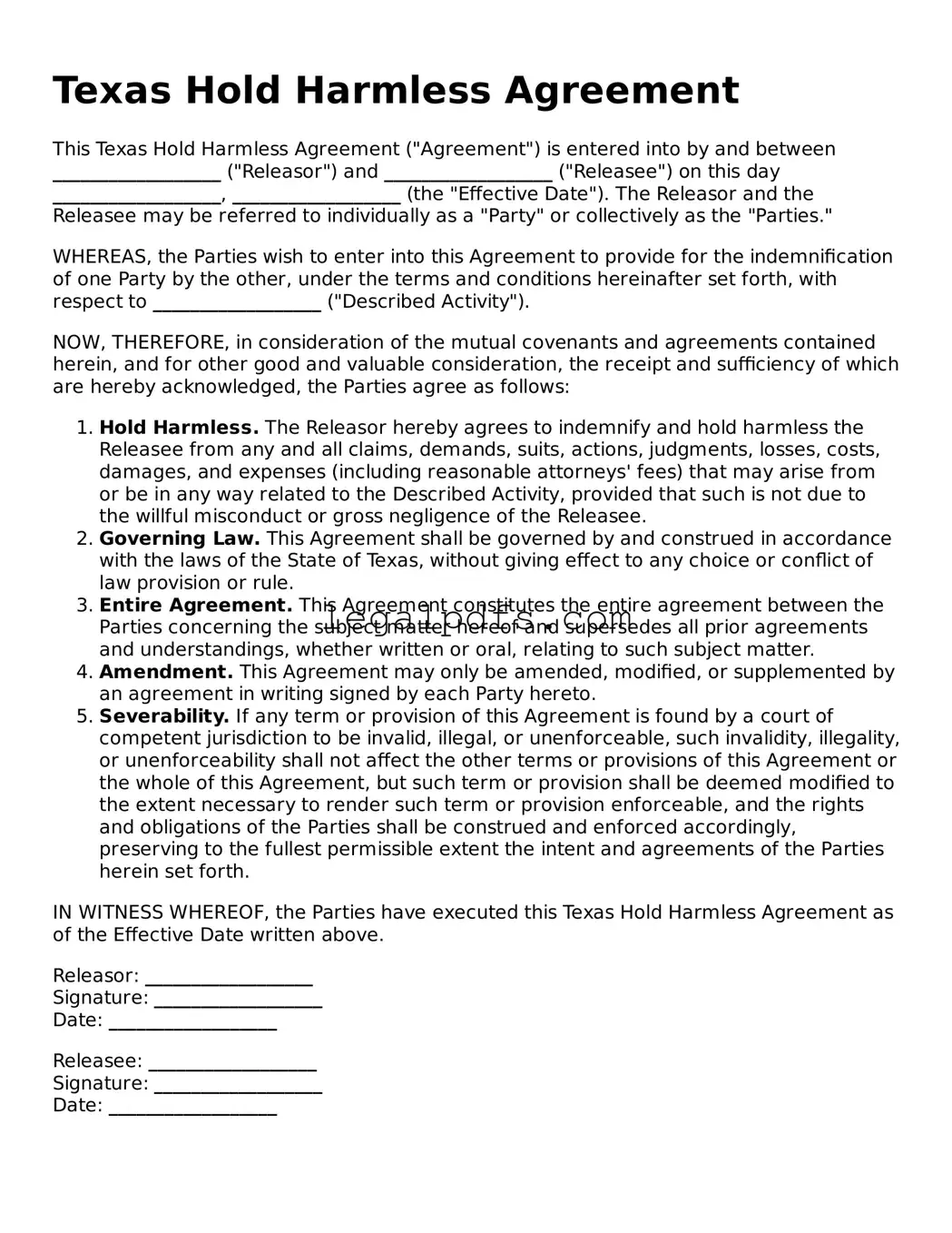What is a Texas Hold Harmless Agreement?
A Texas Hold Harmless Agreement is a legal document that shifts the liability for any injuries, damages, or losses from one party to another. In signing this agreement, the party (releasor) agrees not to hold the other party (releasee) liable for any harm that may arise from a specified activity or situation.
Who should use a Texas Hold Harmless Agreement?
This agreement is beneficial for individuals or businesses in Texas engaging in activities that pose a risk of injury or loss. Property owners, service providers, event organizers, and contractors often use it to protect themselves from legal claims.
When should a Texas Hold Harmless Agreement be signed?
It should be signed before the commencement of the activity that involves risk. This ensures that all parties understand their responsibilities and the risks involved, hence, providing protection against liabilities before any potential issues arise.
Is a Texas Hold Harmless Agreement legally binding?
Yes, when properly drafted, this agreement is legally binding in Texas. It must clearly outline the terms, conditions, and the scope of the hold harmless clause to be enforceable. Both parties should also voluntarily sign the agreement.
Can a Texas Hold Harmless Agreement be challenged in court?
While the agreement is legally binding, it can be challenged in court. If a party believes the agreement was signed under duress, contains unfair terms, or if the circumstances involve negligence that goes beyond the agreed-upon terms, the agreement can be contested.
What information should be included in a Texas Hold Harmless Agreement?
The agreement should contain the names and details of the parties involved, a detailed description of the activity or situation, the scope of the hold harmless clause, the effective period of the agreement, and the signatures of both parties involved.
How does a Texas Hold Harmless Agreement protect me?
It protects you by legally shifting the responsibility for any damages, injuries, or losses resulting from a specified activity from you to the other party. This reduces your risk of legal claims and financial losses.
Can minors sign a Texas Hold Harmless Agreement?
Minors cannot legally sign a contract in Texas. A parent or legal guardian must sign the agreement on behalf of the minor for it to be considered valid.
Does a Texas Hold Harmless Agreement cover intentional acts or gross negligence?
Generally, hold harmless agreements do not protect against intentional acts or gross negligence. If someone causes harm intentionally or through extreme carelessness, liability may not be shifted through this agreement.
How long is a Texas Hold Harmless Agreement valid?
The duration of validity depends on the terms specified within the agreement. It can be set for a specific timeframe or cover the duration of an ongoing activity or relationship. The parties can also agree to terminate the agreement under specific conditions.
